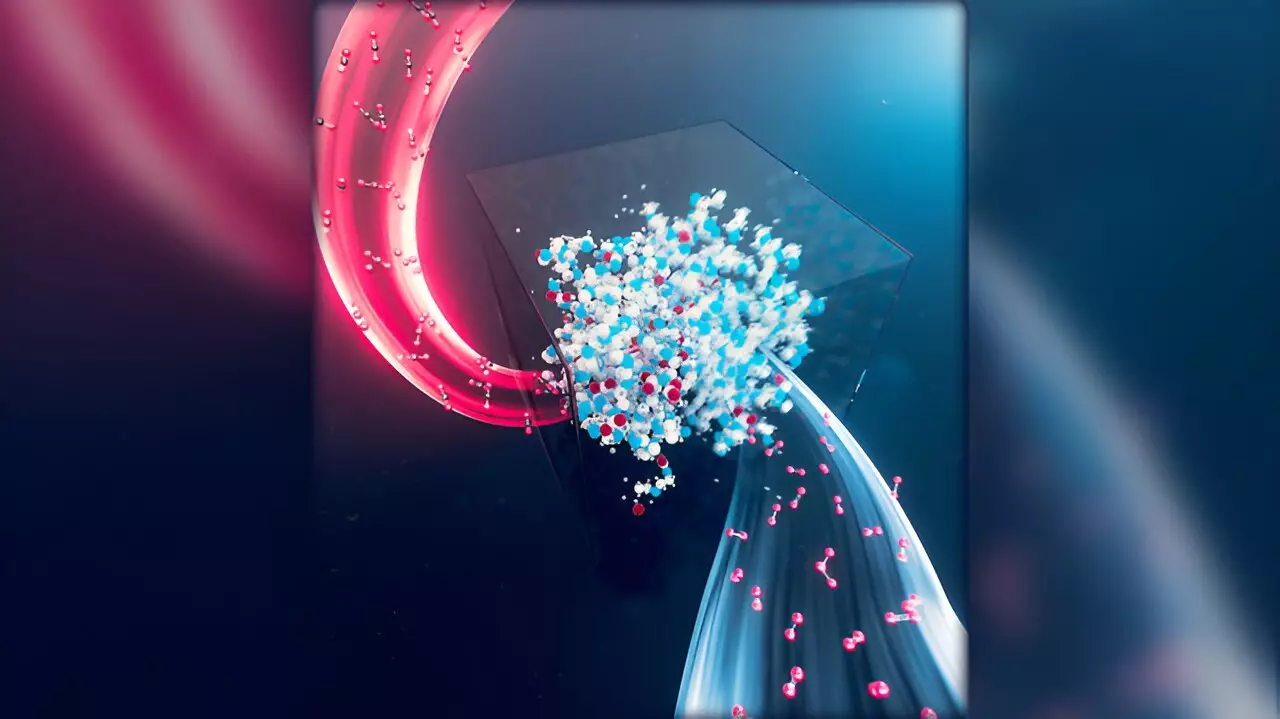Recent advancements by researchers at Lawrence Livermore National Laboratory (LLNL), in partnership with the Georgia Institute of Technology, are paving the way for enhanced carbon capture technologies. Their groundbreaking study, published in the Journal of the American Chemical Society, focuses on carbon dioxide’s (CO2) effects on the stability of amine-functionalized porous solid materials. These materials play a vital role in Direct Air Capture (DAC) technology, which aims to reduce atmospheric CO2 levels efficiently.
The significance of this research lies not just in its findings but also in the implications for future DAC systems. Investigations into how CO2 interacts with poly(ethylenimine) sorbents reveal critical insights that could improve both the performance and longevity of carbon capture solutions. As Simon Pang, the principal investigator, notes, the work emphasizes the necessity of accounting for all atmospheric components when designing DAC technologies.
Understanding the Stability Challenges of Amine-based Sorbents
Amine-based sorbents have emerged as pivotal components in DAC technology due to their remarkable ability to capture CO2 effectively, even at incredibly low concentrations. Nevertheless, the long-term effectiveness of these materials has been problematic, primarily due to their susceptibility to oxidative degradation—an issue that has impeded their practical application.
This research addresses a fundamental question: what is the role of CO2 in the oxidative degradation of these sorbents? The team’s findings reconcile various contradictory interpretations found in previous studies. They demonstrate that CO2 influences the oxidation kinetics of poly(ethylenimine) sorbents in a non-linear manner, with temperature and CO2 concentration significantly affecting outcomes.
A notable aspect of this study is its exploration of CO2’s multifaceted role during the oxidation process. As highlighted by lead author Sichi Li, CO2 serves as both a catalyst for oxidation reactions and a hindrance to polymer chain mobility, which ultimately slows the process of radical propagation. This interplay is instrumental in elucidating the varied degradation profiles observed in these sorbents, thus indicating the complexity of understanding chemical interactions in atmospheric conditions.
Such insights are invaluable. They not only help align conflicting theories in existing literature but also have substantive implications for the future engineering of DAC materials. Identifying the key factors influencing oxidative degradation provides researchers with a pathway to develop sorbents that enjoy enhanced durability.
The study suggests that controlling polymer side-chain mobility and managing acidic environments could mitigate oxidative degradation, opening avenues for more robust sorbent designs. Implementing functional groups, additives, or specialized oxide supports could reduce polymer mobility and offset acidity, thus extending the lifespan of these crucial materials.
Conclusively, this research signals a significant step forward in DAC technology by addressing fundamental challenges in sorbent stability. With ongoing innovation driven by these insights, we may soon witness the emergence of next-generation carbon capture systems that are not only more efficient but also cost-effective, contributing positively to global emissions reduction efforts. The ongoing commitment to understanding the intricate relationships between CO2 and sorbents elevates the potential for achieving meaningful impacts in fighting climate change.

